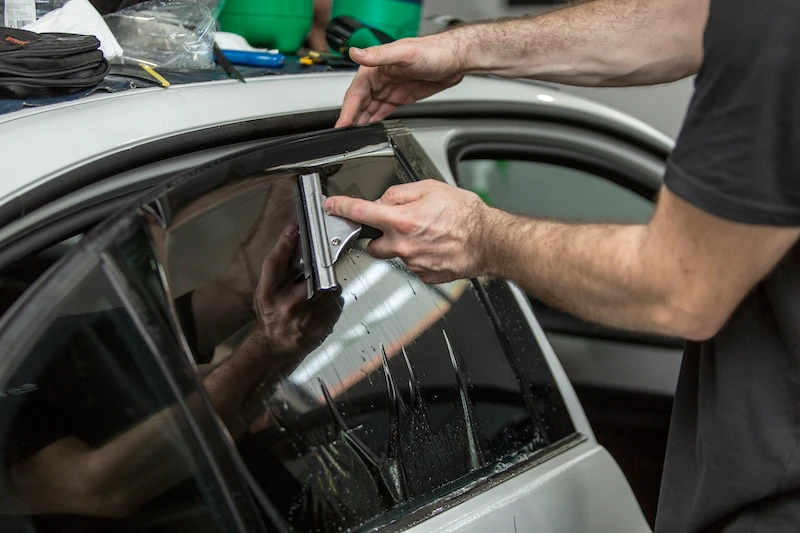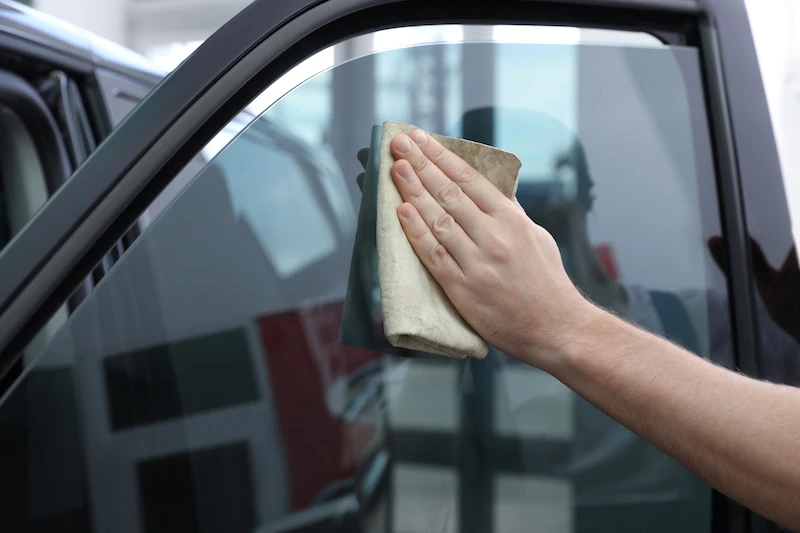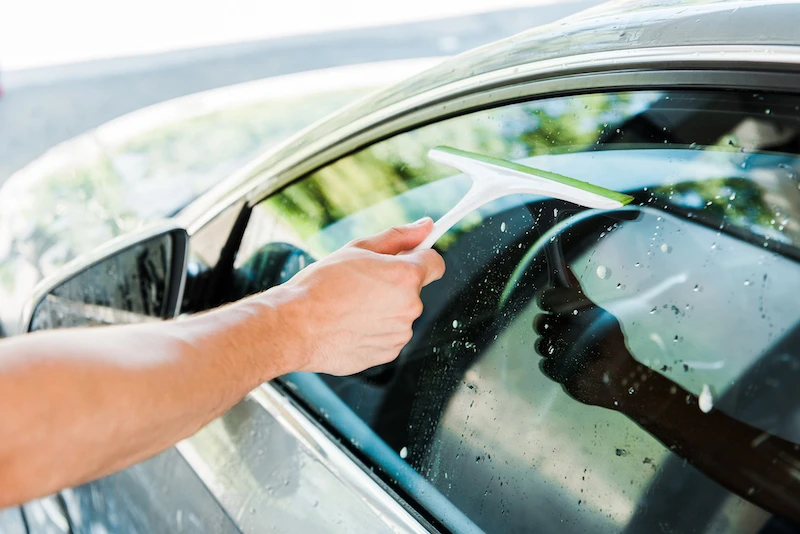As a vehicle owner, one essential aspect to consider is ensuring that your car provides the best comfort while simultaneously protecting your investment. A common practice among vehicle owners is window tinting. But what is window tint? A tint is a thin laminate film that is applied to a vehicle’s windows. Its primary purpose is to reduce the amount of heat and sunlight entering the vehicle.
Window tinting is much more than a cosmetic enhancement to your vehicle. If done right, it offers myriad benefits such as heat reduction, UV protection, glare reduction, and enhanced privacy and security, among others. In addition, it can improve the overall health and comfort of you as a driver and your passengers by protecting against harmful UV rays from the sun.
While there are many types of window tint films available in the market, two of the most popular are ceramic tint and carbon tint. Though they may look similar, the composition of ceramic and carbon tints differs vastly, and as a result, each offers different advantages.

Understanding Carbon Tint
Carbon window tints are popular for their efficacy in blocking infrared light, providing quality heat rejection. In other words, this feature reduces the heat inside your vehicle significantly, leading to better comfort and reduced dependence on air conditioning.
So, what is carbon window tint, and how does it work? Simply put, carbon window tint is made from carbon particles mixed into the film. These particles absorb light, especially the sun’s infrared rays that carry heat. As such, a vehicle with carbon-tinted windows will experience less thermal energy, thereby maintaining a cooler interior. In addition to heat reduction, carbon tint also reduces visible light transmission, which means fewer glares to distract you while you’re behind the wheel.
Some of the significant benefits of carbon tint include its non-reflective finish and complete privacy. It is also known to resist fading over time, providing consistent and high-quality aesthetics. However, while carbon tint window films are effective in blocking heat and sunlight, they aren’t as effective in blocking harmful UV rays compared to other tints. Although reducing ultraviolet rays might not seem important while choosing a tint, remember that these rays are responsible for causing skin cancer and fading your car’s interiors.
Overall, carbon film is an excellent investment for car owners who value privacy and cool interiors but remember to evaluate its effectiveness for UV protection before making your decision. In the next section, we will explore in detail the benefits of ceramic window tints, drawing distinct comparisons between the two types of window tints to help you make an informed decision.

Highlighting Ceramic Tint’s Unique Benefits
Moving onto our next tint option, the ceramic window tint. Ceramic tint, known as the highest quality of tints, is renowned in the car tinting industry for its numerous advantages.
Unlike regular tint or carbon tint which incorporates carbon particles, the ceramic window tint is made with non-conductive, non-metallic ceramic particles. These particles have the unique ability to block up to 99% of the UV rays from the sun— far more than the average carbon or metallic tints. This exceptional UV protection quality not only helps to protect the vehicle’s interior from fading but also helps protect the skin from harmful UVB rays, a benefit that extends especially to those frequent drivers.
At the same time, ceramic window tint is also highly effective in heat reduction due to its ability to cut out infrared light. Despite being powerfully resistant to both heat and UV light, ceramic window tints do not compromise visibility. In contrast to darker tints such as carbon tint, these enable a high degree of visibility, thereby improving the driver’s safety, particularly during nighttime driving.
With all these exceptional benefits, you might wonder if there are any downsides to ceramic window tint. Well, one of the perceived downsides is that the ceramic window tint comes at a slightly higher price point compared to carbon tints or regular tints. However, the extra cost of ceramic tint is easily justified by its superior benefits, from better UV protection to cooler interior temperatures and better visibility.

Choosing the Right Tint for Your Vehicle: The Differences in Carbon & Ceramic
So, we’ve looked at carbon and ceramic tints separately, to understand what sets each one apart. But how do they compare when directly contrasted? Let’s break down the key differentiators, looking at UV protection, cost, infrared light rejection, and visible light transmission, among other factors.
UV Protection
When it comes to UV protection, ceramic tint takes the lead as it can block up to 99% of the sun’s harmful rays. Whether you’re a daily commuter or like to enjoy long leisure drives, the harmful effects of UV rays on your skin and your vehicle’s interiors can be substantially curtailed with ceramic tint. In comparison, carbon tint, while offering a fair amount of UV protection, still falls short of the complete protection that ceramic tint offers.
Cost
Carbon tints are generally more affordable than ceramic tints, making them an attractive option for car owners working with a tight budget. However, if viewed as an investment rather than an expense, the higher cost of the ceramic tint pays off in the longer run with the high degree of protection and durability it offers.
Infrared Light Rejection
Both types of tints fare well in this domain. They are effective in blocking out infrared light, which is responsible for the heat that builds up inside your vehicle. However, ceramic tints are known to perform slightly better in this field, offering a cooler interior environment even under blistering hot conditions.
Visible Light Transmission
With an impressive blocking ability, one might think that ceramic tints compromise on visibility. Contrary to such thoughts, ceramic window tints offer superior visibility, even more so than carbon tints. They provide excellent glare reduction without tinging your view with color or making it too dark.
In the final analysis, while both tints hold their own significant advantages, it’s clear that ceramic window tinting offers broader benefits and superior performance. This, however, doesn’t imply that carbon tint doesn’t have a place in the market. Depending on the specific needs and budget constraints of vehicle owners, carbon tints might still be an optimal choice.

The Tint Guy’s Recommendation: Ceramic Tinting
With over three decades of experience in the window tinting industry, at The Tint Guy we have built our reputation on the delivery of high-quality services, unparalleled expertise, and our dedication to customer satisfaction. Our frontline experience coupled with in-depth knowledge of the industry allows us to provide the best advice to our customers regarding their tinting needs.
After weighing the pros and cons of both carbon and ceramic tints, we recommend ceramic window tinting for its vast array of benefits. Despite the higher initial cost, the superior UV protection, outstanding heat rejection capabilities, exceptional glare reduction, no signal interference, enhanced visibility, and amazing durability of ceramic tints justify the investment.
Industry Leading Brands
We use only the top brands in window tinting to ensure optimal performance. Our 3M ceramic IR and FormulaOne pinnacle ceramic tint products are the best in the industry and provide excellent benefits to you and your car.
At The Tint Guy, our ceramic window tint is not just a product, it’s a service. Our tint shop delivers not only excellent ceramic film quality but also professional installation. Our experienced team ensures that the tint application process is best-in-class, leaving you with a flawless, bubble-free finish that highlights the appeal of your vehicle while adhering to local laws and regulations.
It’s important to remember that window tinting, whether ceramic or carbon, should not just be about altering the aesthetics of your car. It’s a long-term investment in comfort, health, and protection. We believe that by investing a little extra in ceramic tint, you are investing in the long-term quality and value of your vehicle while also ensuring a more pleasant and safer driving experience.
By choosing The Tint Guy, you are choosing quality, longevity, improved comfort, and elevated aesthetics. Whether it’s your vehicle, home, or commercial property, trust the experts who can offer top-tier solutions catering to your unique needs. Schedule your ceramic tinting appointment online today!
References
“Does UV Radiation Cause Cancer?” Does UV Radiation Cause Cancer?, American Cancer Society, 10 July 2019, www.cancer.org/cancer/risk-prevention/sun-and-uv/uv-radiation.html#:~:text=Exposure%20to%20UV%20rays%20can,to%20become%20inflamed%20or%20burned.
“Carbon Films.” Carbon Films – an Overview | ScienceDirect Topics, 2012, www.sciencedirect.com/topics/materials-science/carbon-films.


